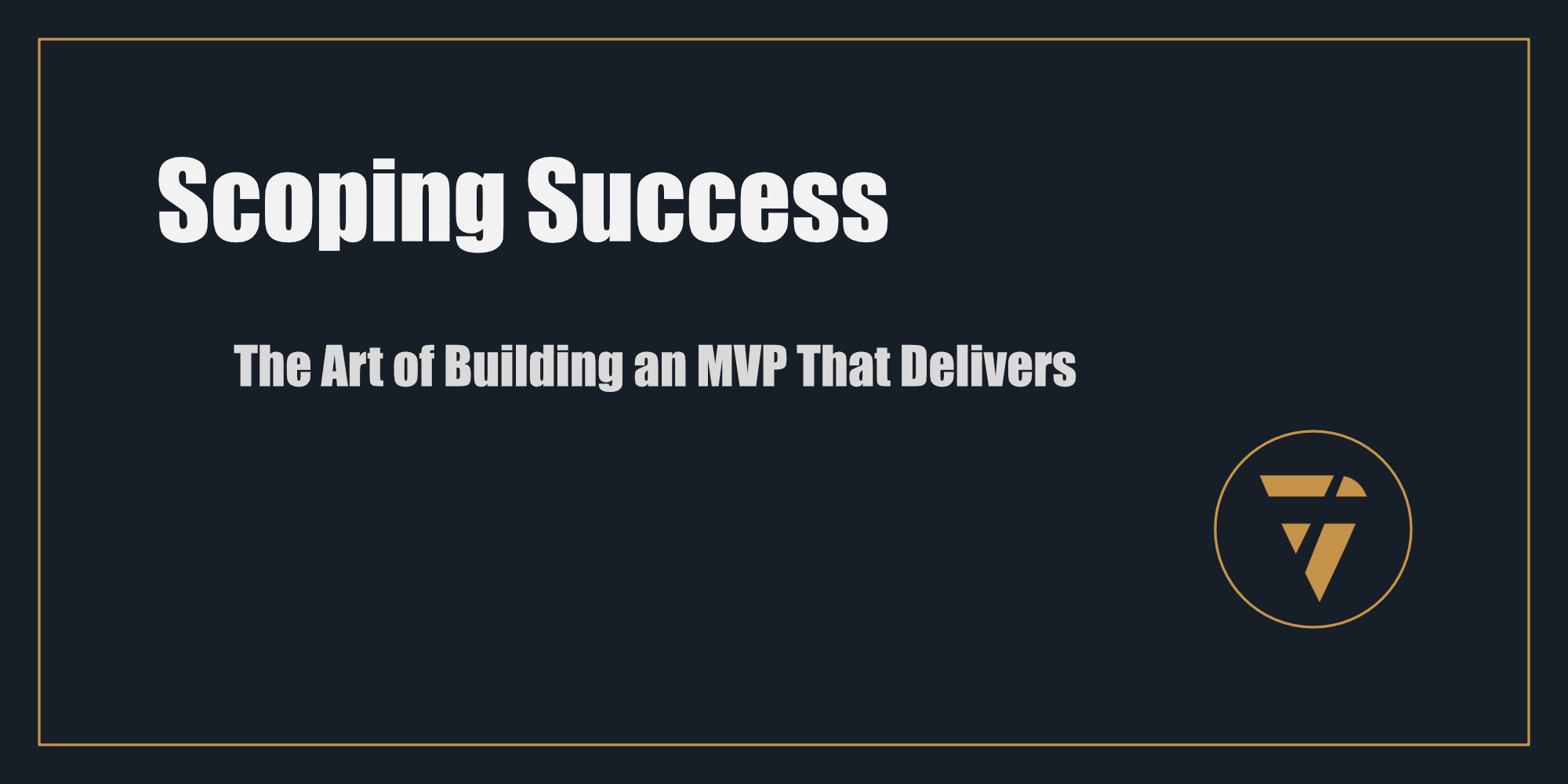Scoping Success
The Art of Building an MVP That Delivers

What if the secret to unlocking innovation wasn’t doing more, but doing less—with precision, purpose, and clarity.
In the world of startups and corporate innovation alike, the Minimum Viable Product (MVP) stands as a paradoxical hero. It’s minimal by design, yet monumental in impact. When done right, it bridges the gap between bold ideas and practical execution, offering a focused foundation upon which the future can be built. But how do you distill a big vision into a small, actionable package?
The answer lies in the art of scoping.
Why MVPs Matter More Than Ever
Today’s fast-moving markets demand agility. Building a fully realized product in one go isn’t just risky—it’s often counterproductive. An MVP allows you to:
- Test assumptions quickly.
- Gather actionable feedback from real users.
- Conserve resources for what truly matters.
Archimedes Financial Systems, a fintech innovator, used this principle to launch their platform for wealth managers in just three months. They didn’t try to boil the ocean. Instead, they asked: What’s the most essential value we can deliver first?
Their answer? A focused feature set that included:
- A clean dashboard to manage tokenized assets.
- Smart contract deployment for fractional ownership.
- Compliance tools for automated KYC and AML processes.
This scope wasn’t just achievable; it was transformative.
The Scoping Process: From Idea to Impact
When defining an MVP, it’s easy to get trapped in the "what if" rabbit hole. But successful teams focus on the "what now." Here’s how to approach it:
1. Start with the Core Value.
Ask yourself: What is the single most important problem this product solves? For Archimedes, it was enabling wealth managers to tokenize and manage assets seamlessly. Everything else—advanced analytics, multi-asset support—was secondary.
2. Prioritize Ruthlessly.
Tools like MoSCoW (Must Have, Should Have, Could Have, Won’t Have) are invaluable here. By identifying must-haves—like compliance integrations—they created a focused roadmap that met critical needs without overextending resources.
3. Leverage Existing Platforms.
Building from scratch is rarely necessary. Archimedes used Factor Studio’s pre-built tokenization workflows, which saved months of development time while ensuring security and scalability.
4. Embrace Iteration.
The MVP is a starting point, not an end goal. Archimedes’ team approached launch knowing they would refine and expand based on early feedback.
What Happens After Launch?
Here’s the critical insight: An MVP isn’t just about shipping a product—it’s about starting a conversation with your users. By prioritizing early feedback loops, you can:
- Adjust features to better meet user needs.
- Validate your broader vision before scaling.
- Build credibility with stakeholders who see tangible progress.
Archimedes’ three-month MVP wasn’t just a proof of concept; it was a foundation for scaling into a full-fledged platform that could redefine asset management.
How You Can Apply This
If you’re building your own MVP, consider this checklist:
- Define Success: What does success look like at this stage? Is it user adoption, revenue, or something else?
- Prioritize Value: Strip your idea down to its most valuable core.
- Plan for Growth: Think modularly—what you build today should lay the groundwork for tomorrow.
- Launch, Learn, Repeat: Treat your MVP as the first chapter in a longer story.
Focus is the Key to Growth
In a world of infinite possibilities, focus is your superpower. Archimedes Financial Systems didn’t succeed because they did everything; they succeeded because they did something exceptionally well.
Now, it’s your turn. What’s the one problem you can solve right now to deliver transformative value? Focus on that, and the rest will follow.
What’s holding you back from scoping and launching your MVP? Tell me what you’re working on. Share your thoughts, turn your vision into a reality.
Subscribe for more actionable insights into building, scaling, and innovating in a fast-paced world.
This Substack is reader-supported. To receive new posts and support my work, consider becoming a free or paid subscriber.
This is what I’m working on. Tell me what you think, I enjoy the conversation! Subscribe and follow the work in real time.
Thanks!
B
PS -





